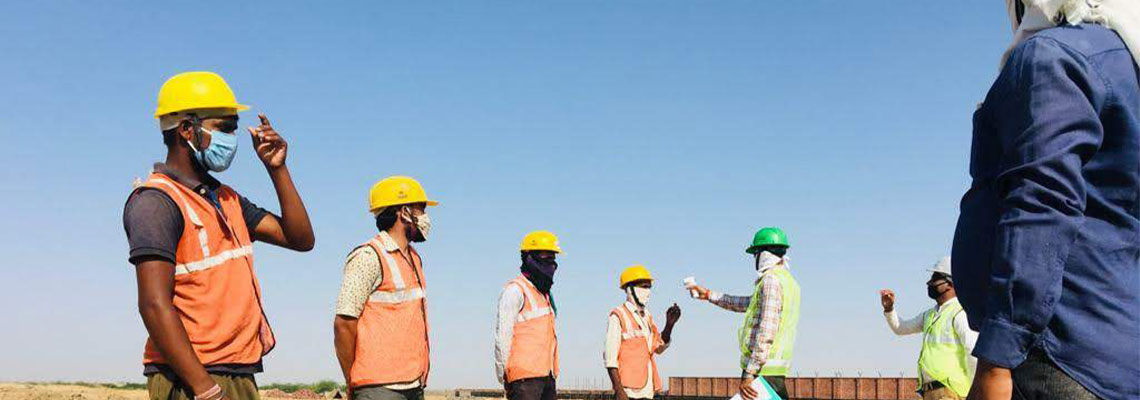
Response to covid 19

The COVID-19 pandemic has significantly impacted the economically vulnerable construction industry. On the plus side, however, as it has the potential to generate jobs, the construction industry has a lot of potentials to boost the recovery, which in turn might support the sector’s transformation towards sustainability and digitization.
Tripartite cooperation, social discourse, and international labor norms are essential for fostering the construction sector’s human-centered recovery from the crisis.
The Construction sector, however, has also suffered from the closure of several sites around the world. Additionally, operational limitations and disruptions to supply chains have affected the majority of active sites. Financial indexes have reflected this disruption, with public engineering, construction, and building materials companies experiencing much greater than average declines since February.
Although cyclical downturns are nothing new for the construction industry, COVID-19’s speed and force are unparalleled. Projects are getting pushed back or shelved. Supply lines are in danger. The work health of employees and subcontractors is a concern, and social distance on building sites presents some practical difficulties. Employers that have had to lay off staff may worry about their future availability and skill level. The impact of the lockdowns may also compel certain building and contracting businesses to restructure debt, look for new sources of funding, or risk going bankrupt because many of them lack significant cash reserves.
There may be serious financial repercussions from COVID-19 for some of your suppliers and subcontractors. Others might not be able to complete contracts at this time. Suppliers from abroad might be more prone to delays. It is a tremendous problem for many construction businesses to gain visibility into and control over the behaviors of their diverse supply chains at the site level.
Company must maximize visibility to identify supply chain weaknesses and decide how to respond. The company has contacted its providers, collected information, and created a dashboard that would later be updated and improved. Take into account the financial and legal ramifications, as well as their effect on margins, cash flow, loan repayments, and conditions, based on what the dashboard displays. Companies made sure that all supply chain changes are taken into consideration in their project controls, risk management, and governance processes.
Companies wanted to provide contractual flexibility (if appropriated) and technical support for essential suppliers with strong long-term prospects, such as assistance in accessing government funds for global recovery and stimulus initiatives. However, companies must also be prepared to switch vendors as necessary.
Contact Info 2023 vrcgroup. All Rights Reserved.
